The American Battle Monuments Commission (ABMC) Aisne-Marne American Cemetery is located near the small French village of Belleau. How well do you know this well-known site? Here are five things you may not know about Aisne-Marne American Cemetery.
At the foot of the battlefield
Aisne-Marne American Cemetery’s chapel lies at the edge of the famed Belleau Wood, known for the fierce fighting that took place between American and German forces there during World War I. According to the site’s interpretive team, the chapel is symbolically situated where it is—not at the very top nor bottom of the hillside—because it was at this level of the slope that the U.S. Marines had their last defensive line after they captured Belleau Wood. Among the curved rows of headstones is a high concentration of graves from this battle that ensued in the early days of June 1918. At 1,087 dead or wounded, the Marines suffered more casualties on June 6, the first day of the offensive, than in its previous 143-year history. Visitors can still walk the battlefield trail behind the chapel and see the artillery craters, foxholes and trench lines that remain, along with the “Marine Monument,” sculpted by Felix de Weldon, who also created the Iwo Jima Memorial in Arlington, Virginia.
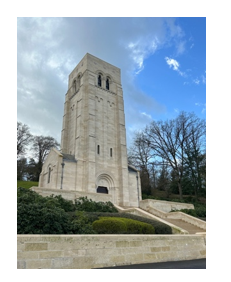
A unique unknown
Aisne-Marne American Cemetery is home to a unique unknown burial, resting at Plot A, Row 13, Grave 91. Until 2023, this unknown American service member was the most recent burial of a U.S. WWI casualty at an ABMC site. His remains were discovered in 1988 roughly 2 kilometers from the cemetery, unearthed at a local farm. It is believed to be a U.S. Marine due to the proximity to Belleau Wood and the intense battle waged there between the Marines and the German forces in 1918. The remains were interred with the help of a Marine Security Guard detachment from the U.S. Embassy in France in 1988.
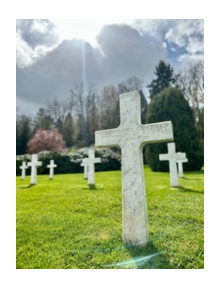
A connection to Arlington National Cemetery
The cemetery also played a prominent role in American history and in iconic memorial to its fallen in the U.S. In September 1921, the War Department directed the exhumation of one unknown American service member from each of the four WWI American cemeteries in France—Meuse-Argonne American Cemetery, Somme American Cemetery, St. Mihiel American Cemetery, and Aisne-Marne American Cemetery. The four were placed in identical caskets, and a highly-decorated WWI veteran Sgt. Edward F. Younger, was given the honor of selecting which of the four would go on to be interred at Arlington National Cemetery’s Tomb of the Unknown Soldier, dedicated on Nov. 11, 1921. The remaining three caskets were resealed and buried at Meuse-Argonne American Cemetery, and while it is not known which of the four lies at Arlington, he does so still today in honor of all American unknowns.
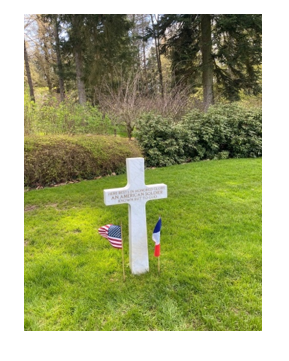
The lingering scars of war
The chapel at Aisne-Marne American Cemetery, like all ABMC cemeteries, bears unique architectural features including sculptures of regimental insignia, the images of soldiers, tanks, and canons. These designs were included to reinforce the idea that the chapel is not just welcoming to all faiths, but that the emphasis should be placed on the men who fought and died in the war more than on religious iconography. The chapel itself withstood damage by heavy artillery during World War II, but as ABMC worked to repair the structure, it was decided a single impact hole at its entrance would remain as a reminder of what took place.
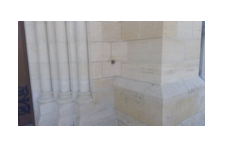
Famous visitors
Lying in the French countryside and flanked by farmland, Aisne-Marne American Cemetery can feel as remote as it is picturesque. Yet it has also seen its share of notable visitors, including two famous faces who came to pay their tributes several decades apart. During the summer of 1935, Walt Disney, accompanied by his brother Roy, embarked upon a European tour, which included a 10-day trip throughout France and a stop at Aisne-Marne American Cemetery to reflect on the sacrifices of the war. Former President Richard Nixon also visited the cemetery, and while the timeline of his visit is less clear, historical images show him descending the steps of the cemetery’s chapel and walking among the headstones.
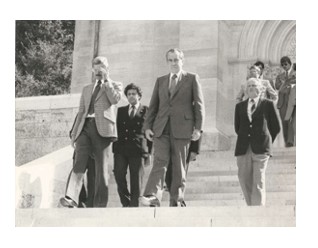
The ABMC’s mission is to honor the service of the Armed Forces by creating and maintaining memorial sites, offering commemorative services, and facilitating the education of their legacy to future generations. It was founded in 1923 following World War I and its 26 cemeteries and 31 monuments honor the service men and women who fought and perished during World War I (WWI), World War II (WWII), the Korean War and the Vietnam War, as well as some who fought during the Mexican-American War.
Those sites are a constant reminder of Gen. John J. Pershing’s promise that “time will not dim the glory of their deeds.”
 An official website of the United States government. Here's how you know.
An official website of the United States government. Here's how you know. 